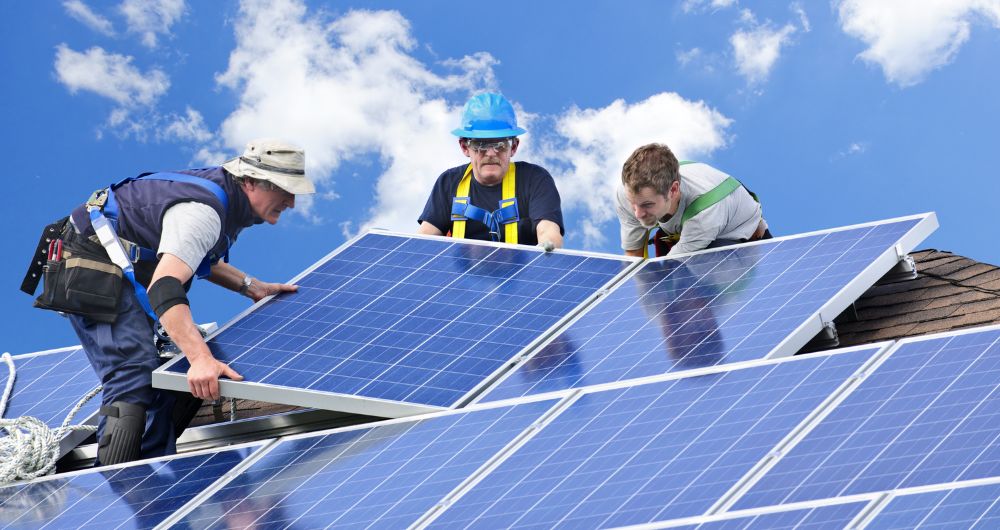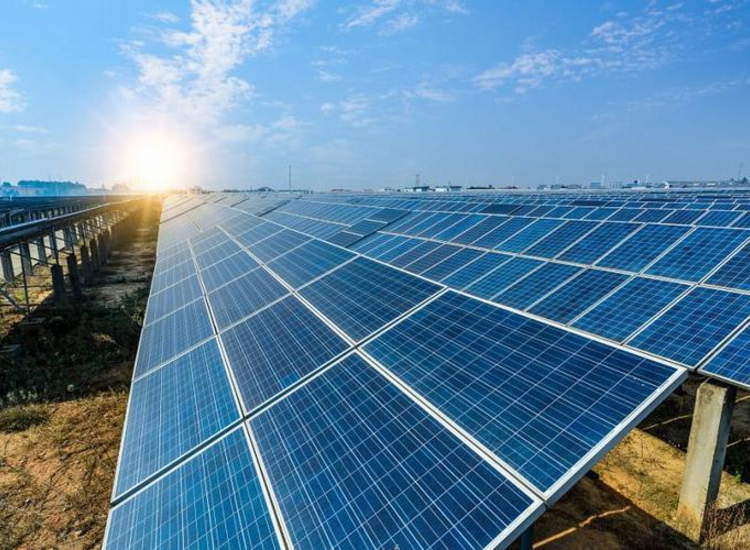What are 5 warranty red flags for polycrystalline photovoltaic panels
Warranty red flags for polycrystalline PV panels include >2% first-year power attenuation (vs. 2% industry limit), EL-tested cracks covering >5% cell area, hot spots exceeding 90°C (normal <85°C), EVA yellowing index >5 (standard <3), and frame corrosion depth >0.1mm (allowance ≤0.05mm).
Short Warranty Coverage Period
The industry standard for a material or product warranty is now a robust 25 years. This isn't an arbitrary number; it's aligned with the expected financial payback period and lifespan of the system. If a manufacturer only offers a 10-year warranty, it's a significant red flag. This shorter duration suggests they anticipate potential failures, such as delamination, junction box issues, or major snail trail contamination, occurring sooner rather than later. For you, the owner, a failure in year 11 means facing the full, out-of-pocket cost for a replacement panel, which could be 200 to 300 per panel, plus 150to400 in labor fees for installation and re-commissioning. This unexpected cost can drastically undermine your projected 25-year return on investment and increase your effective cost per kilowatt-hour.
A short warranty period often correlates with the use of lower-quality materials. For example, the backsheet, a critical module that protects the cells from environmental damage, might be made from cheaper polyethylene terephthalate (PET) instead of more durable polyvinyl fluoride (PVF). These inferior materials degrade faster under constant exposure to UV radiation and wide temperature fluctuations from -20°C to 85°C, leading to cracking and loss of electrical insulation. The ethylene-vinyl acetate (EVA) encapsulant might yellow at a higher rate, perhaps losing 5% or more transparency over a 10-year period, which directly reduces power output by blocking light absorption. This accelerated degradation means your system's actual energy production might fall short of projections by year 8, hurting your savings on electricity bills.
Essentially, a 10-year warranty is a strong signal that the manufacturer is not building the panels to last for the long haul, protecting their bottom line at the potential expense of your system's performance and longevity. Always prioritize panels that guarantee 25 years of coverage, as this demonstrates a commitment to quality and aligns with the financial timeline of your solar investment.

Limited Power Output Guarantee
The industry benchmark is a guarantee that panels will still produce at least 87.5% to 89% of their original rated power after 25 years. This is typically based on a degradation rate of no more than 0.7% per year after an initial 1.0 to 3.0% drop in the first year. A red flag is a guarantee that falls significantly short of this standard, such as only promising 80% output after 25 years or, worse, a shorter guarantee term of just 10 years on performance. This directly translates to a 5% to 10% loss in your total energy production over the system's life, which can amount to thousands of dollars in lost electricity savings and extend your payback period by several years.
High-quality polycrystalline panels experience most of their degradation in the first 12 months of exposure to sunlight and heat, known as Light Induced Degradation (LID), which is typically capped at -2.5%. After this initial period, the degradation curve should flatten to a stable, linear rate. Panels with a subpar guarantee often use cells with higher impurities and cheaper EVA encapsulant that yellows at a faster rate when subjected to continuous thermal cycling between 25°C and 85°C. This yellowing scatters and absorbs light, reducing the photon energy reaching the silicon cells. This can cause an average real-world degradation rate of 0.8% to 1.0% per year instead of the premium rate of 0.5%. Over a 15-year period, that difference means a panel guaranteed for 92% retention might only be producing 85% of its original power, while a premium panel will be operating at 91.5%.
Guarantee Term & Scope | Annual Degradation Rate | Final Output at Year 25 | Estimated Energy Loss (vs. Premium) | Financial Impact ($0.16/kWh) |
Premium: 87.5% at 25 years | 0.5% after Year 1 | 87.5% | 0 kWh | $0 |
Standard: 85.0% at 25 years | 0.6% after Year 1 | 84.0% | ~450 kWh | ~$1,800 |
Subpar: 80.0% at 25 years | 0.8% after Year 1 | 78.5% | ~1,100 kWh | ~$4,400 |
Always scrutinize the exact wording of the performance guarantee. A strong warranty will explicitly state the guaranteed percentage at the end-of-warranty term and specify the maximum annual degradation rate. Avoid guarantees that use vague language or only cover a degradation rate without a final output minimum, as this can be a loophole for excessive cumulative loss.
High Annual Performance Degradation
While top-tier polycrystalline panels guarantee a maximum degradation of 0.5% per year after a first-year drop of 2%, some manufacturers specify rates as high as 0.8% or even 1.0%. This difference seems small annually but compounds dramatically over the system's life. A panel degrading at 0.8% per year will lose roughly 18% of its output after 20 years, while a panel at 0.5% will lose only 11%. For a 10 kW system, this 7% performance gap translates to over 14,000 kWh of lost electricity generation, costing you more than 2,100 at a conservative 0.15 per kWh rate.
Degradation Rate | Year 1 Output | Output at Year 10 | Output at Year 20 | Total Energy Loss (20 yrs, 10kW) |
0.5% / year | 98.0% | 93.2% | 89.0% | Baseline (0 kWh) |
0.7% / year | 97.5% | 90.5% | 84.0% | ~9,500 kWh |
0.8% / year | 97.0% | 89.0% | 82.0% | ~14,000 kWh |
The primary culprit is often low-quality ethylene-vinyl acetate (EVA) encapsulant. When exposed to constant ultraviolet (UV) radiation and operational temperatures cycling between -10°C to 85°C, cheap EVA formulations yellow and haze at a much faster rate. This yellowing scatters incoming light and reduces the photon transmission to the silicon cells by 3-5% over a 5-year period, directly cutting into the panel's conversion efficiency.
Furthermore, these panels often use cells with higher metallic impurities and micro-cracks originating from the cutting process. Under thermal stress, these micro-cracks propagate, increasing the cell's series resistance and permanently reducing its maximum power point (PPM). This process, known as Light and Elevated Temperature Induced Degradation (LeTID), can cause an additional 3-6% power loss within the first 5 years of operation in poorly manufactured panels.
The combined effect of EVA browning and LeTID means a panel with a 0.8% stated degradation rate might actually experience 1.2% loss in the first few years, falling far below its nameplate rating long before the warranty period is over. This high and unpredictable degradation makes your financial payback period uncertain and can void the guarantee if your actual output falls below the curve but the manufacturer claims the average rate is within the flawed contract terms. Always insist on a degradation rate of 0.5% and verify third-party testing reports from sources like PVEL that test for LeTID susceptibility, ensuring the panels are built to last and perform consistently under real-world stress.
Labor Costs Excluded from Coverage
The industry-standard comprehensive warranty covers both the overnight shipping of the new module and the 150 to 400 in professional labor costs to safely remove the faulty panel and install the new one. If your warranty excludes these labor costs, you are responsible for paying a certified technician to perform the swap.
For a rooftop installation on a 35-degree pitch, two-story home, this single service call can easily cost 350 to 500 when factoring in the minimum service fee, travel time, safety equipment setup, and the 45 to 90 minutes of actual labor. Over a 25-year period, with a statistical failure rate of even 2-3%, this could mean an unexpected out-of-pocket expense of $700 or more for a small number of failures, drastically altering your projected return on investment.
A warranty that requires you to ship the defective panel back to the manufacturer at your own expense before a replacement is issued is a major red flag. This process can take 4 to 8 weeks, during which your system is underperforming. The out-of-pocket cost for crating and shipping a single 45 lb, 2m x 1m panel via freight can range from 100 to 250, which is often non-refundable.
By not factoring in an average of 275 per potential warranty claim for labor, they reduce their liability per panel by 60−70%. This means the payback period on that repair could be over 5 years, assuming your system generates 900 worth of electricity annually.
Furthermore, coordinating the repair yourself introduces logistical headaches and delays. You must locate a qualified installer willing to do a small, one-off job, schedule their visit (which may have a 2−3 week lead time), and ensure all electrical work is permitted and inspected to maintain your system's overall warranty. This process can leave your system partially offline for over a month, resulting in an additional 40 to $75 in lost energy production. Always insist on a warranty that explicitly includes "labor for removal and reinstallation" or "full installation coverage" for the entire warranty period, ensuring a truly hassle-free and cost-free claim process that protects your investment's financial model.

Complex and Slow Claim Process
Reputable manufacturers resolve 90% of claims within 30 days, while others drag the process out for 4 to 6 months through multiple stages of requirement escalations and bureaucratic delays. During this extended period, a system with a single failed 350-watt panel could lose over 150 kWh of production, costing you 25 or more at a 0.16/kWh rate, all while you're still paying your loan or lease on the underperforming equipment.
The initial claim submission for a defective panel often requires a specific set of digital photos showing the serial number, the fault (e.g., snail trails, delamination), and a screenshot from the monitoring portal showing the power output drop. Over 40% of initial claims are rejected for "insufficient evidence," requiring a second visit to the array.
After the initial submission, they often require an on-site verification by a "certified technician," which you must schedule and pay for upfront, with costs ranging from 150 to 300. This visit must occur within a narrow 5 to 10-day window provided by the manufacturer, or the case is closed. Once verified, the claim enters an "engineering review" that can take another 30 to 45 business days. If approved, the shipping process for the replacement panel begins, which is another 2 to 3 weeks for delivery. The entire timeline, from failure to resolution, often looks like this:
Process Stage | Average Time Delay | Estimated Cost to Owner | Probability of Delay or Rejection |
Initial Claim Submission | 3-7 business days for response | $0 | 40% |
On-Site Tech Verification | 2-3 weeks for scheduling | 150−300 | 25% |
Engineering Review | 30-45 business days | $0 | 15% |
Replacement Shipping | 14-21 business days | $0 (if covered) | N/A |
Total Estimated Time/Cost | 70 - 90 days | 150−300 | |
This drawn-out 70 to 90-day process is designed to wear you down. The probability of a delay or rejection at each stage compounds, with less than 60% of claims being approved on the first attempt. Manufacturers bank on the fact that a $300 problem isn't worth 8 hours of your time spent on emails, phone calls, and coordinating technicians. Before you buy, always ask the installer or manufacturer for their specific claim procedure document. Look for warranties that guarantee a replacement shipment within 30 days of claim approval and that utilize a network of pre-approved local technicians to handle verification, streamlining the entire process and protecting your time and investment.